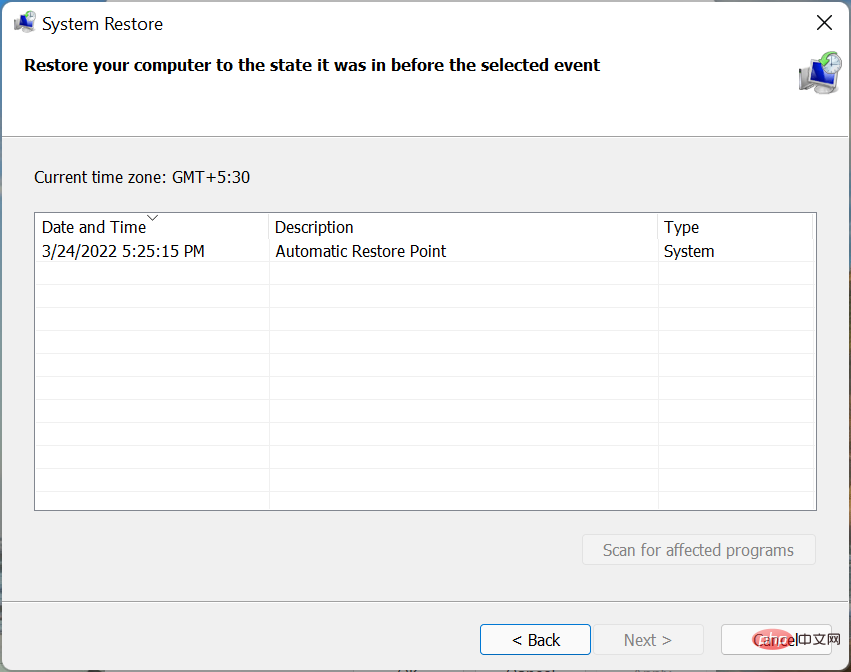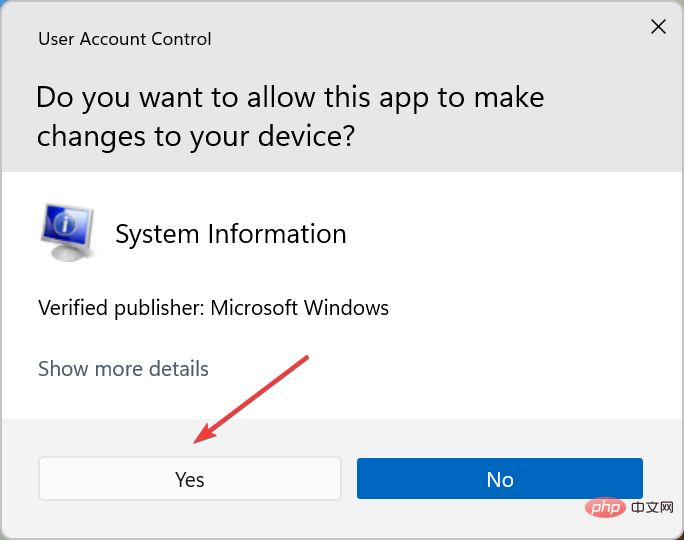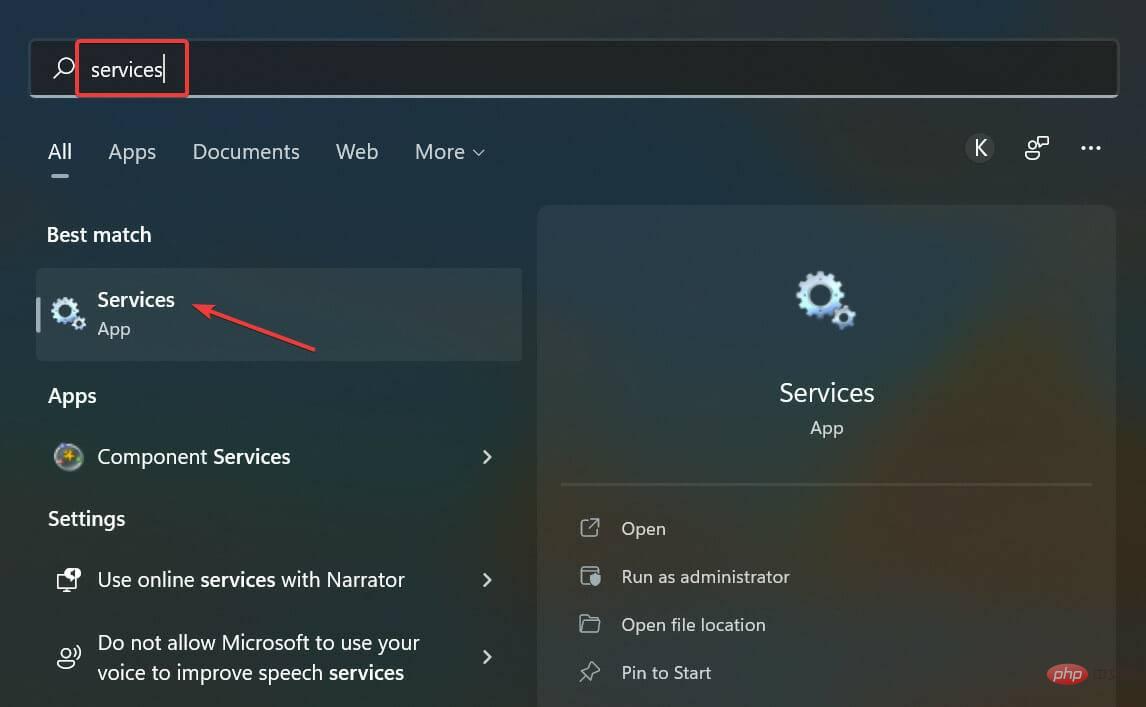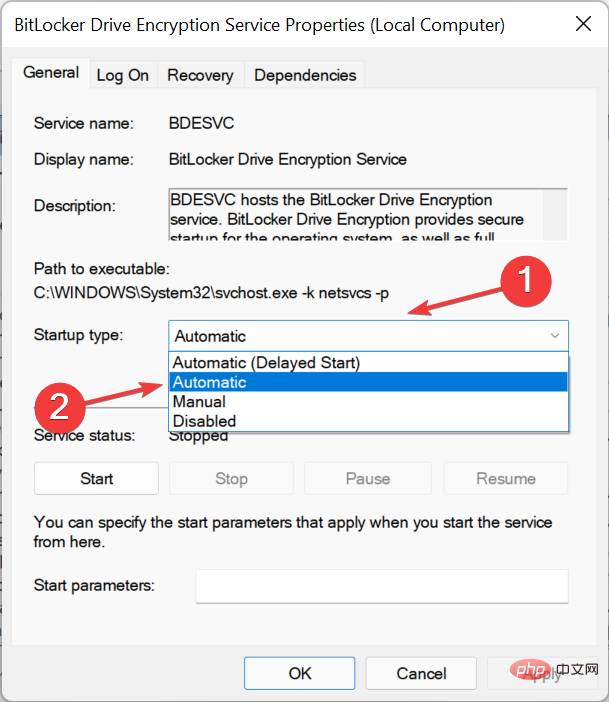Fix: Can't open BitLocker Control Panel tool in Windows 11
BitLocker is a feature in Windows that allows users to encrypt data stored on drives and helps ensure privacy and security from intrusions. But many users reported encountering the Unable to open BitLocker Control Panel tool error message in Windows 11.
This message is usually followed by error code 0x80004005, which may help determine the root cause and resolve the error easily. However, this is not always the case.
Therefore, we have decided to dedicate this article to listing the causes of the BitLocker Control Panel tool cannot be opened error in Windows 11 and the most effective ways to fix it.
Why am I seeing the Cannot Open BitLocker Control Panel Tool error in Windows 11?
Whenever trying to determine the root cause, always understand that the situation may be completely different from user to user. Therefore, if a method works for one user, there is no guarantee that it will work for you.
But with a proper understanding of each, you'll be more likely to identify and eliminate it.
The BitLocker Control Panel tool cannot be opened error in Windows 11 can be caused by a number of reasons, but in most cases, the installed version of Windows 11 does not provide BitLocker functionality.
If you determine that this function is available, it is most likely related to critical services not running or system files being damaged. Apart from this, bugs in the installed version of Windows can also cause errors.
Now that you have a basic understanding of the issues that cause the BitLocker Control Panel tool cannot be opened error in Windows 11, let’s take a look at the solutions. Follow the steps listed in order to troubleshoot quickly and efficiently.
How to fix the BitLocker Control Panel tool cannot be opened error in Windows 11?
1. Check whether the installed version of Windows 11 provides BitLocker
- Press Windows S to launch the search menu, text at the top Enter System Information in the field, right-click the relevant search result and select Run as administrator from the context menu.

- Click Yes on the pop-up UAC (User Account Control) prompt.

- Now, on the right side of the System Summary tab, scroll down and check next to Device Encryption Support. If it says Prerequisites are met, follow the additional steps listed here to get BitLocker up and running.

In most cases, users who are found to be encountering the Unable to Open BitLocker Control Panel Tool error in Windows 11 are running Home editions that do not support BitLocker. It is supported on Windows 11 Pro.
So, if you are running the Home edition, you should upgrade to access the features exclusive to the Pro edition.
However, some devices (2-1 laptops and tablets) running Windows 11 Home support device encryption, a feature similar to BitLocker.
2. Perform a DISM and SCF scan
- Press Windows S to launch the search menu and enter Windows Terminal## in the text field #, then right-click on the relevant search result and select Run as administrator from the context menu.
 Click
Click - Yes on the pop-up UAC (User Account Control) prompt. <strong></strong>
 Now, click on the down arrow at the top and select
Now, click on the down arrow at the top and select - Command Prompt from the list of options. Alternatively, you can click Ctrl in a new tab Shift2 to launch the Command Prompt.
 Now, paste the following content and hit
Now, paste the following content and hit - Enter to run the DISM tool.
DISM.exe /Online /Cleanup-image /Restorehealth<strong></strong> ##Finally, execute the following command to run the SFC
##Finally, execute the following command to run the SFC - scan. <strong></strong>sfc /scannow
<strong></strong>
Or you can use a third-party repair tool to automatically identify and eliminate most errors. We recommend using Restoro as it scans for corrupted system files and malware, repairs damage caused by the latter, and performs regular troubleshooting.
⇒Get Recovery<strong></strong>3. Run Bitlocker Device Encryption Service
Press- Windows
- SLaunch the Search menu, enter "Service" in the text field at the top, and click on the relevant search results. <strong></strong>
 Now, find BitLocker Device Encryption Service
Now, find BitLocker Device Encryption Service - , right-click on it and select Properties from the context menu. <strong></strong>
 Now, select Automatic from the Startup type drop-down menu.
Now, select Automatic from the Startup type drop-down menu. -
<strong></strong>
 If the service is not running, click the " Start
If the service is not running, click the " Start - " button under "Service Status". <strong></strong>
 When finished, click OK at the bottom to save changes.
When finished, click OK at the bottom to save changes. -
<strong></strong>
 As mentioned earlier, you may encounter the Unable to open BitLocker Control Panel tool error in Windows 11 if critical services are not running on your device. So just make sure to run it and then restart your computer for the changes to fully take effect.
As mentioned earlier, you may encounter the Unable to open BitLocker Control Panel tool error in Windows 11 if critical services are not running on your device. So just make sure to run it and then restart your computer for the changes to fully take effect.
4. Change the local group policy editor
- Press Windows R to start the run command and enter gpedit in the field , then click OK or hit Enter to launch Local Group Policy Editor.

- Now, double-click on Administrative Templates in the left navigation pane and then double-click on the Windows Components option that appears below it.

- Next, double-click on BitLocker Drive Encryption, then on Operating System Drives in the navigation pane, and finally on the right Require additional authentication at startup (Windows Server 2008 and Windows Vista) entries.

- Once here, make sure it is Enabled, check the Allow BitLocker without a compatible TPM option, and click OK at the bottom to save changes.

5. Perform a System Restore
If nothing else works, you have no choice but to perform a System Restore. This is probably the easiest way to eliminate even the most complex problems.

#But keep in mind that while personal files will not be affected, you may end up losing your applications and configured settings.
The idea behind System Restore is to take your computer back to a point in time where errors did not exist. To do this, you must select a restore point that was created before you first encountered the problem.
Also, you always have the option to undo System Restore in Windows 11 if the process doesn't go as planned or you don't get the results you expected.
These are all the ways you can fix the BitLocker Control Panel tool cannot be opened error in Windows 11 and be able to access BitLocker again and make the changes you want.
Also, learn how to disable BitLocker in Windows 11. Additionally, if you encounter an error while using BitLocker, the fix is fairly simple and you can get it up and running in no time.
The above is the detailed content of Fix: Can't open BitLocker Control Panel tool in Windows 11. For more information, please follow other related articles on the PHP Chinese website!

Hot AI Tools

Undresser.AI Undress
AI-powered app for creating realistic nude photos

AI Clothes Remover
Online AI tool for removing clothes from photos.

Undress AI Tool
Undress images for free

Clothoff.io
AI clothes remover

Video Face Swap
Swap faces in any video effortlessly with our completely free AI face swap tool!

Hot Article

Hot Tools

Notepad++7.3.1
Easy-to-use and free code editor

SublimeText3 Chinese version
Chinese version, very easy to use

Zend Studio 13.0.1
Powerful PHP integrated development environment

Dreamweaver CS6
Visual web development tools

SublimeText3 Mac version
God-level code editing software (SublimeText3)

Hot Topics
 1659
1659
 14
14
 1415
1415
 52
52
 1310
1310
 25
25
 1258
1258
 29
29
 1232
1232
 24
24
 What is the reason why PS keeps showing loading?
Apr 06, 2025 pm 06:39 PM
What is the reason why PS keeps showing loading?
Apr 06, 2025 pm 06:39 PM
PS "Loading" problems are caused by resource access or processing problems: hard disk reading speed is slow or bad: Use CrystalDiskInfo to check the hard disk health and replace the problematic hard disk. Insufficient memory: Upgrade memory to meet PS's needs for high-resolution images and complex layer processing. Graphics card drivers are outdated or corrupted: Update the drivers to optimize communication between the PS and the graphics card. File paths are too long or file names have special characters: use short paths and avoid special characters. PS's own problem: Reinstall or repair the PS installer.
 How to speed up the loading speed of PS?
Apr 06, 2025 pm 06:27 PM
How to speed up the loading speed of PS?
Apr 06, 2025 pm 06:27 PM
Solving the problem of slow Photoshop startup requires a multi-pronged approach, including: upgrading hardware (memory, solid-state drive, CPU); uninstalling outdated or incompatible plug-ins; cleaning up system garbage and excessive background programs regularly; closing irrelevant programs with caution; avoiding opening a large number of files during startup.
 How to solve the problem of loading when PS is always showing that it is loading?
Apr 06, 2025 pm 06:30 PM
How to solve the problem of loading when PS is always showing that it is loading?
Apr 06, 2025 pm 06:30 PM
PS card is "Loading"? Solutions include: checking the computer configuration (memory, hard disk, processor), cleaning hard disk fragmentation, updating the graphics card driver, adjusting PS settings, reinstalling PS, and developing good programming habits.
 How to set color mode for export PDF on PS
Apr 06, 2025 pm 05:09 PM
How to set color mode for export PDF on PS
Apr 06, 2025 pm 05:09 PM
The secret to export PDFs with accurate colors: choose color mode according to the purpose: RGB for network display, CMYK for professional printing. Check Embed Profiles when exporting to maintain color consistency. Adjust compression settings to balance image quality and file size. For PDFs for networks, use RGB mode; for PDFs for printing, use CMYK mode.
 Does mysql need the internet
Apr 08, 2025 pm 02:18 PM
Does mysql need the internet
Apr 08, 2025 pm 02:18 PM
MySQL can run without network connections for basic data storage and management. However, network connection is required for interaction with other systems, remote access, or using advanced features such as replication and clustering. Additionally, security measures (such as firewalls), performance optimization (choose the right network connection), and data backup are critical to connecting to the Internet.
 Is slow PS loading related to computer configuration?
Apr 06, 2025 pm 06:24 PM
Is slow PS loading related to computer configuration?
Apr 06, 2025 pm 06:24 PM
The reason for slow PS loading is the combined impact of hardware (CPU, memory, hard disk, graphics card) and software (system, background program). Solutions include: upgrading hardware (especially replacing solid-state drives), optimizing software (cleaning up system garbage, updating drivers, checking PS settings), and processing PS files. Regular computer maintenance can also help improve PS running speed.
 Is PS slow loading related to other programs that are running?
Apr 06, 2025 pm 06:03 PM
Is PS slow loading related to other programs that are running?
Apr 06, 2025 pm 06:03 PM
The secrets to mastering Office software include: understanding different versions and platforms, correctly installing and configuring, proficient in using the software interface, in-depth understanding of feature operations, application collaboration and sharing functions, utilizing templates and styles, mastering advanced skills, and solving common problems. In addition, you need to choose a version that suits your needs, make good use of templates and styles, develop backup habits, and learn shortcut keys and advanced techniques to improve efficiency.
 How to solve the problem of loading when the PS opens the file?
Apr 06, 2025 pm 06:33 PM
How to solve the problem of loading when the PS opens the file?
Apr 06, 2025 pm 06:33 PM
"Loading" stuttering occurs when opening a file on PS. The reasons may include: too large or corrupted file, insufficient memory, slow hard disk speed, graphics card driver problems, PS version or plug-in conflicts. The solutions are: check file size and integrity, increase memory, upgrade hard disk, update graphics card driver, uninstall or disable suspicious plug-ins, and reinstall PS. This problem can be effectively solved by gradually checking and making good use of PS performance settings and developing good file management habits.









 ##Finally, execute the following command to run the
##Finally, execute the following command to run the 
 Now, find
Now, find  Now, select
Now, select  If the service is not running, click the "
If the service is not running, click the " When finished, click
When finished, click 




